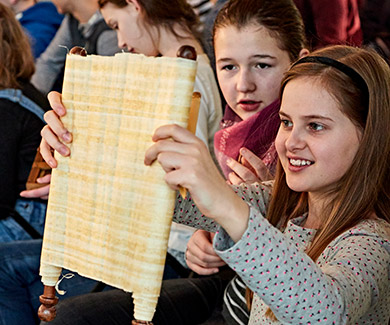The Hands-On Museum
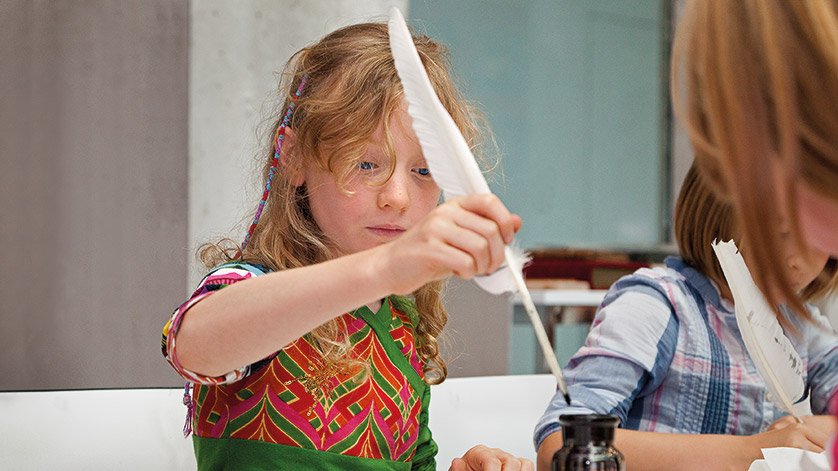 Photo: Klaus-D. Sonntag
Photo: Klaus-D. Sonntag
The German Museum of Books and Writing in Leipzig stages numerous educational events at which visitors actively and creatively get to explore the history of writing, books, paper and media.
General and theme-based guided tours of the permanent exhibition “Signs – Books – Networks: From Cuneiform to Binary Code” and the current temporary exhibitions provide surprising insights into media history.
We offer a wide variety of theme-based events that are open to everybody. Regular events for various age groups such as “Do it Yourself”, “Family Sunday”, the “Creative Workshop” or “Art Workshop“ cover different themes relating to paper, printing and handwriting. Whether preschoolers, schoolchildren, adults or special events for seniors – there's something for everyone!
Our theme-based programme
The numerous themes covered by our events programme are suitable for schools, project weeks, family excursions and as leisure activities. Children and young people of all ages from pre-school to vocational school are welcome. As an out-of-school learning centre, the Hands-On Museum offers numerous activities that build on school curricula in the subjects of German, history, art, handcrafts, general studies, religion and ethics.
Events can be booked individually and last 90 to 120 minutes depending on the activity chosen. Admission is free and there are no material costs.
Our theme-based events can be booked at:
dbsm-info@dnb.de
Phone + 49 341-2271-324
Booking by prior arrangement
How old are our books?
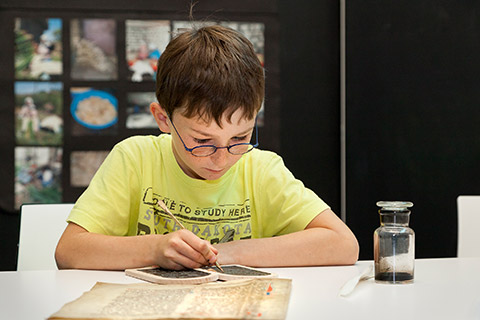 Photo: Klaus-D. Sonntag
Photo: Klaus-D. Sonntag
Books are one of humanity's most important cultural assets. But when did books first appear in their current form? Books could only be created with a properly developed script and suitable writing or printing material. Throughout the course of history, a wide variety of materials have served as writing surfaces, especially stone, clay, leather, papyrus, parchment and paper; these were also used for purposes other than book design. There are lots of unusual discoveries to make on the thousand-year journey from the scroll to the bound book!
Activity
In the museum gallery you can try your hand at writing hieroglyphs with a reed pen and rushes as a way of getting to know earlier writing cultures. We also present monastic inscription which was written using goose quills.
Age
from pre-school
The medieval book
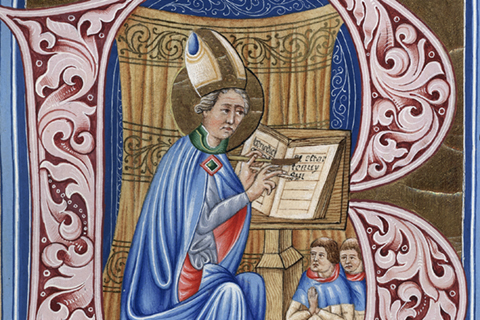 Photo: DNB
Photo: DNB
During the early Middle Ages, the monasteries were places of education and learning in which books were both manufactures and used.
In their writing workshops monks and nuns wrote the books and illustrated them using valuable inks. Writing was valued as a pious and deserving activity. Elaborate handbindings made of leather and parchment with clasps and fittings clad the books.
Activity
We use a magnificent medieval manuscript to show and explain the materials and work carried out by the scribes, illuminators, parchment makers and book binders. Further options include the design and colouring of initials or writing in so-called “black letters”.
Age
from class five
From papyrus to paper
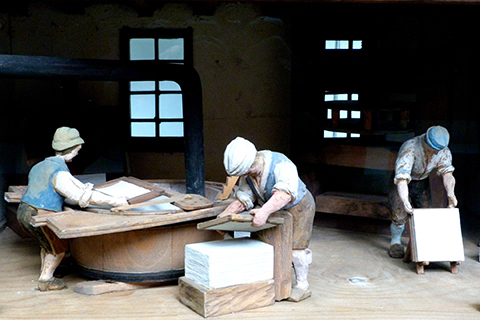
What's so special about paper? Paper – one of humankind's most ingenious inventions – has been used for centuries to record, store and distribute information. The first European papers were made in paper mills using old rags. The process of manufacturing paper has undergone radical changes over the centuries. We will tell you about the history of paper and how it is made and used. We explain the history, production and use of paper, and also other writing materials. Before paper was invented, people used to write on different materials such as wax tablets, papyrus and parchment.
Activity
Special paper folding techniques can be used to create paper figures and other artworks. You can also try your hand at origami paper folding.
Age
from class three
Children's books throughout history
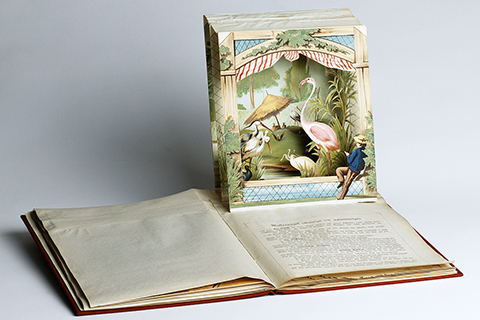 Photo: Christoph Sandig
Photo: Christoph Sandig
Pop-up books, venetian blind books, perfumed or glittery books: children's books tell us stories, transport us to distant worlds and invite us to dream. But when did books for children first appear and what did they look like in the past? Struwwelpeter, Robinson Crusoe, Max and Moritz, Pippi Longstocking, Sams, Pettson and Findus – each generation has its own characters and heroes.
Activity
From picture books, books on rearing and educating children, and children’s bibles through to the early days of adventure books and comics – we take you on a journey through time to discover the history of children’s literature. We give children of different ages the opportunity to make their own small books using simple binding techniques.
Age
from pre-school
The Book of Books: The Bible
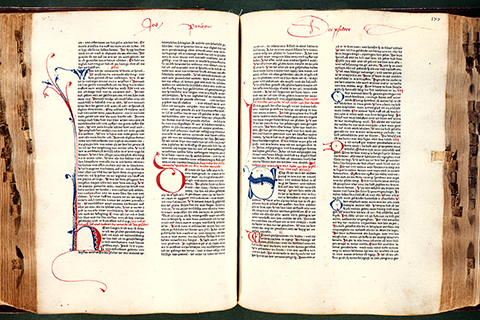
Let us take you on a journey of discovery through the centuries: the Bible, which has sold more copies than any other book in world history, has changed dramatically in language and aesthetic design since the early Middle Ages. Monks and nuns needed religious texts for their liturgy as early as the twelfth century. Over time, the design of the bible evolved from medieval manuscripts to block printing and the so-called B42 (Johannes Gutenberg’s 42-line bible).
Activity
Use gouache inks and brushes to paint your own (ready-made) initials. And anyone wanting to give free rein to their creativity can also design their own initials.
Age
from class five
The book city of Leipzig
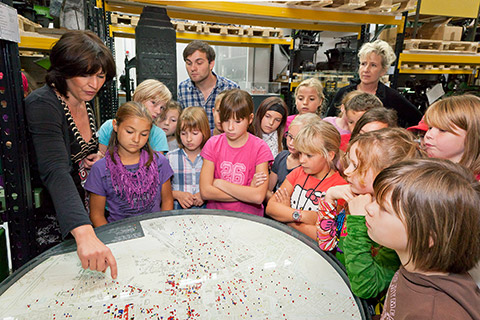 Photo: Klaus-D. Sonntag
Photo: Klaus-D. Sonntag
In 1497 the right to hold trade fairs was bestowed upon the city of Leipzig. Since then, Leipzig has been an important centre of the international book trade. The first book printed in Leipzig, a theological political treatise, was published in 1481.The production and distribution of books has shaped the city’s history for more than 500 years. At different times Leipzig was the leading book capital of Germany, even of Europe. From the introduction of book printing in the Late Middle Ages to the establishment of well-known publishing houses such as Reclam or Brockhaus in the industrial age, trade related to the printed word was always a business lifeline in Leipzig.
Activity
Creative activities possible by arrangement.
Age
from class five
Black on white: book printing
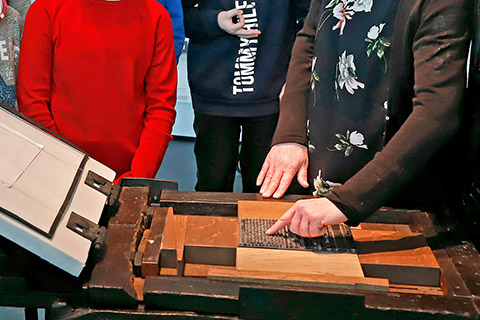 Photo: PUNCTUM, Peter Franke
Photo: PUNCTUM, Peter Franke
What ingenious idea did Johannes Gutenberg have and what impact has it had up to and including the media age? The printing master changed the world with his revolutionary idea. By inventing book printing with movable metal type in the middle of the 15th century Johannes Gutenberg made it possible to reproduce texts mechanically. His invention includes the production of type material, the movable metal letters together with typesetting and printing techniques.
Activity
We will use objects in the Museum to explain these inventions to you, and you will be able to try out the printing press like in Gutenberg’s time.
Age
from class five
Material printing / collage
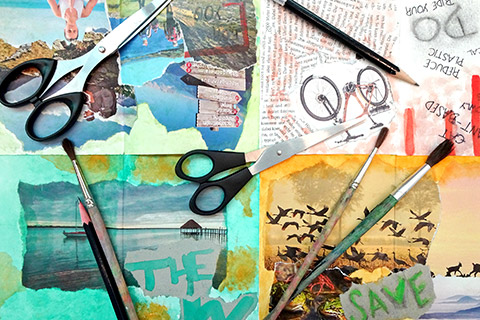 Photo: DNB
Photo: DNB
Material prints are made by spreading lino printing ink on a plate. You then apply one or more different ink colours to the materials you have chosen, arrange them on the plate, then print the result onto the paper. Simple household objects can be used as print templates, e.g. ribbons, corks, coins, screws, bottle tops, fabrics, paper or cardboard remnants. You create the shape by cutting the materials beforehand depending on your chosen design. You can deliberately choose forms and structures or leave the result to chance.
Activity
Experiment with different materials, colours and shapes, and you will be surprised by the many different effects you can achieve.
Age
from class five
Linocut
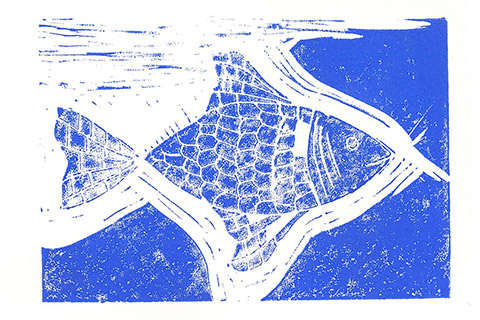 Photo: DNB, Claudia Seeber
Photo: DNB, Claudia Seeber
The first step is to create and draw the design. You can do this directly on the linoleum plate. However, the print will then be reversed. If you want to avoid this, you can use tracing paper and carbon paper to transfer the design to the plate. You then start cutting the plate using linocut tools. The areas you cut out will not take up the ink and will remain white. Once the linocut is finished, it is inked with a roller and printed on paper using a special press. You can use the print template to make as many prints as you want by applying fresh ink each time.
Activity
Linocut can be used to create animal, plant and other designs and even lettering. All you need to create fascinating prints is a little imagination and manual dexterity.
Age
from class five
Woodcut
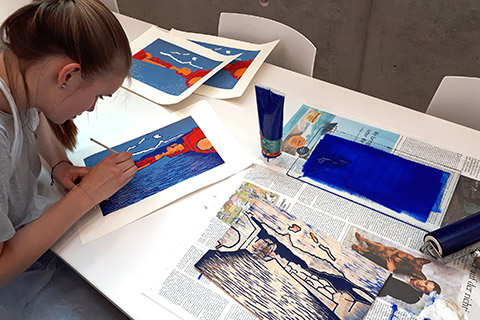 Photo: DNB, Ulrike Merrem
Photo: DNB, Ulrike Merrem
Woodcut is probably the classic form of relief printing. The preparation and working methods involved are similar to linocut. The first stage is the same, i.e. to create and draw the design. A wide range of hard and soft woods can be used. Each type of wood has its own properties, which must be taken into account when you are carving it. The grain of the wood also creates beautiful effects during the printing process. Since wood is harder than linoleum, a larger number of prints can be made.
Activity
Create your own woodcut, and the finished print will surprise you. You can colour the black-and-white woodcut manually using watercolour paints.
Age
from class five
Etching
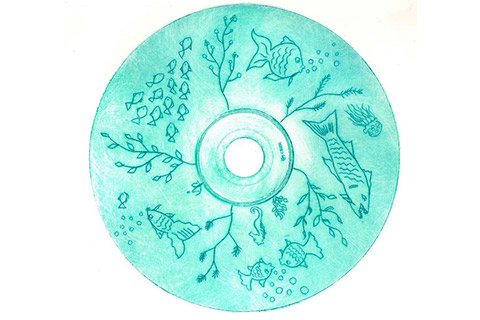 Photo: DNB
Photo: DNB
Etching involves scratching a design on a metal or plastic plate. For this, you use special etching needles with wooden handles. You don’t really need to buy special plates from art supplies stores – you can use old CDs and CD-ROMs instead. Being round, they are ideal for designing mandalas. Once the designs have been engraved onto the plate, you colour them with special ink, making sure that the ink is rubbed deep into the grooves and any surplus is removed from the plate. Etchings are always printed on damp paper. This ensures that the ink is extracted from the grooves as efficiently as possible. The etchings are printed using a printing press.
Activity
You don’t need any experience with metalwork to use this flat printing technique. You can also use the fine etching needle to create designs with delicate lines, which will produce charming prints.
Age
from class five
Nature printing
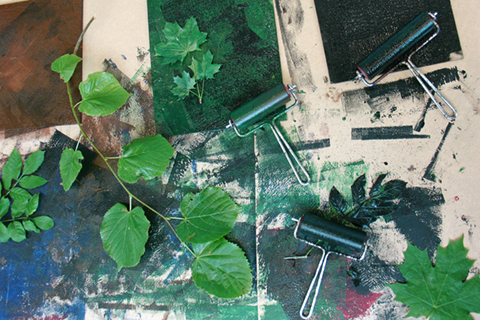 Photo: DNB, Ulrike Merrem
Photo: DNB, Ulrike Merrem
Plants as a printing form – how does it work? With some skill, delicate and fascinating images can be created from flowers and leaves. Images of plants can be created using many printing techniques: woodcut, wood engraving, copper engraving, lithography and linocut. Nature printing is a fascinating technique because of the authentic representation of the plants and the immediate success.
Activity
Leaves, flowers or grasses are inked with a roller. Then the inked plant is placed between two sheets of paper and fed through a printing press. Just see what fine structures emerge in nature printing.
This course is only available from May to September.
Age
from class three
Screen-printing
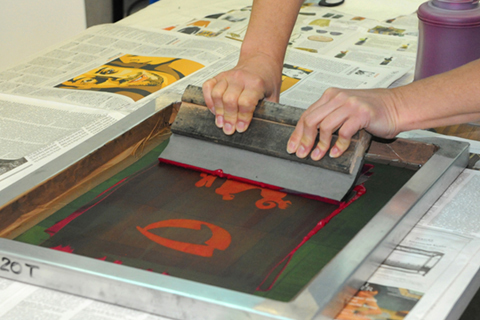 Photo: DNB, Dora Carstensen
Photo: DNB, Dora Carstensen
Letterpress, gravure and flat printing are known printing techniques, but how do you print using a screen? The difference between screen printing and other printing techniques is that the printed design is not the result of direct contact between two surfaces. Rather the ink is transferred to the paper through a screen. The design is created using templates. Screen-printing is not only deployed by artists, it is used also for commercial and industrial purposes and in graphic, ceramic and textile design.
Activity
You can print motives on jute bags using a prefabricated screen, ink and a squeegee.
Age
from class five
Bookplates
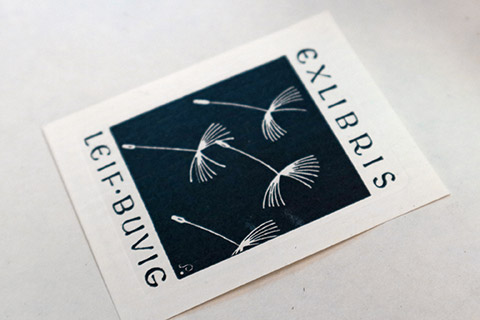 Photo: DNB
Photo: DNB
The precursors of printed bookplates were handwritten marks of ownership, which were already commonly used in the scriptoria of the early medieval monasteries. Following Johannes Gutenberg’s invention of the letterpress with movable metal letters in the 15th century, books became cheaper and more widely available. This caused libraries to burgeon, and book owners began to want to mark their own book collections. As a result, they began gluing bookplates – small graphic artworks printed on sheets of paper – inside their bound volumes.
Activity
During this event, you can design and print your own bookplates using woodcut, etching or linocut techniques.
Age
from class seven
Short history of handwriting
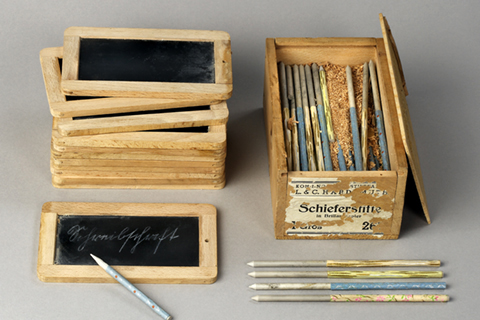 Photo: Klaus-D. Sonntag
Photo: Klaus-D. Sonntag
Cursive handwriting occupies a special position among the forms of handwriting due to its rapid and fluid motion. The history of handwriting is explained on the basis of historical Gothic script, Sütterlin script and the GDR "Schulausgangsschrift".
Activity
You can practise your handwriting by tracing from a template with quills and steel nibs or using a stylus and slate.
Age
from class five
Typography: The ABC of typefaces
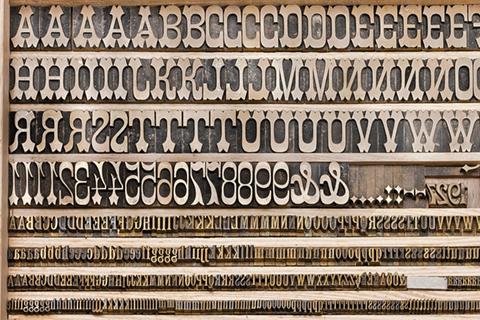 Photo: kunstmann
Photo: kunstmann
We are constantly surrounded by an almost infinite variety of letters. In newspapers, magazines, books and other printed matter, on cars and buildings, on the TV and on the Internet: We see all kinds of scripts wherever we go. We usually pay no attention to the form of the letters when we read, we only perceive the message of the text. We will use handwritten and printed scripts to demonstrate and discuss the influence of contemporary taste, individuality, the need for representation and the principles of proportion and readability.
Activity
Creative activities possible by arrangement.
Age
from class eight
The art of calligraphy
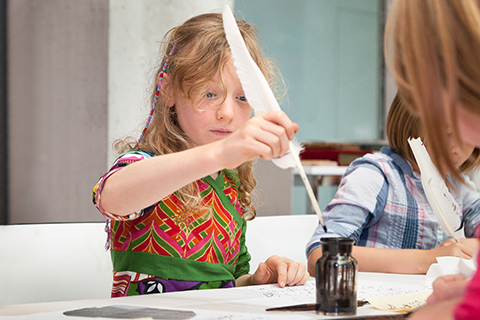 Photo: Klaus-D. Sonntag
Photo: Klaus-D. Sonntag
Join us in discovering the beautiful art of calligraphy. Textbooks and books of samples, so-called “calligrapher’s books”, have been in existence since the beginning of the 16th century. They contained instructions on using steel nibs and creating ornate lettering. They could be used to learn all kinds of script.
Activity
You can use quills, steel nibs and ink to create calligraphic writing on tracing paper placed on top of a template. You can also put words together in upper and lower case letters by moving the tracing paper. Use calligraphy to create poems, letters and stories. Anyone who feels confident enough can of course try writing freehand.
Age
from class three
Hand lettering
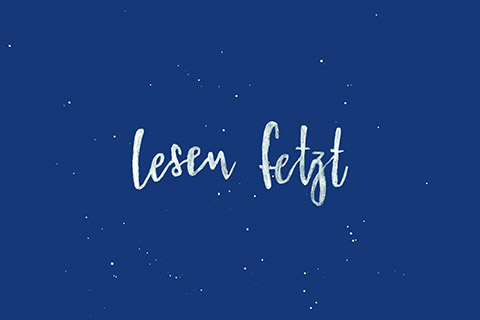 Photo: DNB
Photo: DNB
Hand lettering is the generic term for all kinds of lettering. Unlike calligraphy, the letters are not written, but rather drawn in a beautiful, artistic design. Hand lettering can be created on any surface using any type of writing implement, e.g. a piece of paper and a pencil. The wonderful thing is that almost anything is possible.
Activity
You can combine different scripts and use all kinds of tools to embellish your lettering with illustrations and fascinating effects. Let your imagination run wild as you create your own greeting cards, notepaper and invitations!
Age
from class five
24 dots and dashes: Chinese script
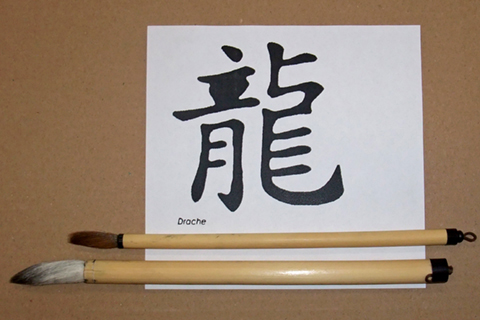 Photo: DNB, Ulrike Merrem
Photo: DNB, Ulrike Merrem
Graphic Chinese characters can be created using 24 dots and dashes. The “five treasures” that Chinese calligraphers use for writing are brushes, ink, ink sticks, ink stones and paper. Chinese script is one of the most fascinating phenomena of Asian culture. paper. Chinese writing system uses syllables rather than letters: a character or the combination of several characters is assigned to each word.
Activity
In addition to painting the Chinese characters with Asian calligraphy brushes and Chinese ink, the production of ink using an ink stone is explained. The motive of the Chinese dragon can also be screen-printed.
Age
from class five
Paper folding
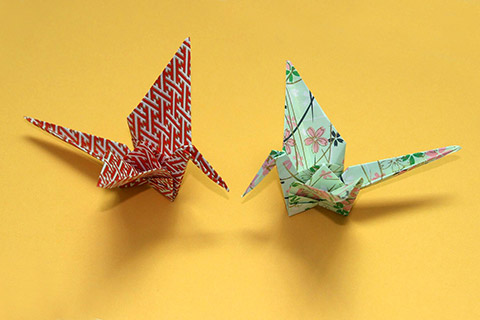 Photo: DNB, Dora Carstensen
Photo: DNB, Dora Carstensen
Asia, where paper originally came from, was also the birthplace of origami, the art of paper-folding. A magical world of paper figures can be created using skill and with an eye for attractive shapes. What is unique about paper folding is that it allows you to create fantastic works of art with just a few simple folds – and there is no need for scissors or glue.
Activity
This folding technique gave rise to other forms such as origami, tangrami, fleurogami and zengami. We will give you step-by-step instructions showing you how to fold three-dimensional figures using a sheet of paper.
Age
from pre-school
Home-made decorated paper
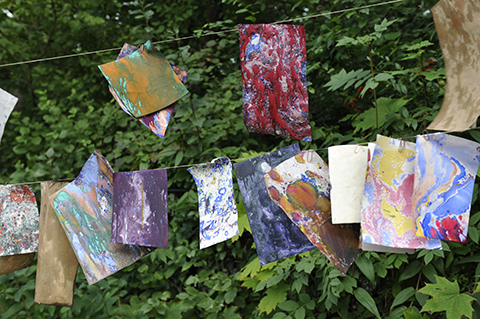 Photo: DNB, Bärbel Kaiser
Photo: DNB, Bärbel Kaiser
Paper, paste, oil paints, and ox bile: these are the "ingredients" for making various types of decorated paper. Historical decorated papers from the Museum's collection provide you with suggestions for making your own paper, for example using paste and filler techniques. Let your imagination run free by revelling in the interplay of colours and shapes, helped by a large measure of chance.
Activity
After a short introduction to the history of decorated and pasted papers you can start pasting away to your heart's content. You can experiment using paints, wooden sticks and spatulas, combs and your fingers.
Age
from class three
Child's play with paper: Paper and papier-mâché
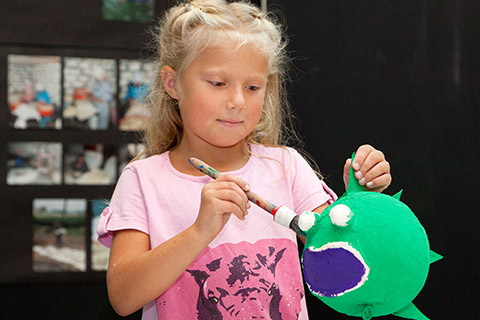 Photo: Klaus-D. Sonntag
Photo: Klaus-D. Sonntag
Piggy banks, ducks, fish or penguins: with imagination and a willingness to try out new things, a balloon, pieces of old newspaper, and wallpaper paste can be turned into fun sculptures or useful items.
Activity
The pasting starts with a balloon, a bucket of paste and strips of newspaper. The figures you create can then be painted and decorated at the second workshop after they have had a chance to dry. How you decorate your creations is completely up to you – with cotton wool, glitter, wiggle eyes, or beaks and feet made of egg cartons. Once they are dry, they make wonderful “piggy banks” or piñatas.
Course: you will have to attend two workshops.
Age
from class one
Stick figures and flip books
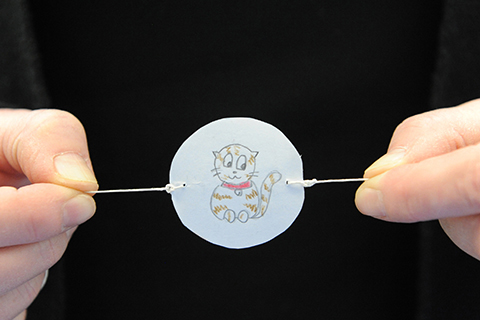 Photo: DNB, Dora Carstensen
Photo: DNB, Dora Carstensen
We show you step-by-step how to bring stick figures to life – with a full range of movements and emotional expressions. Moving images can also be produced by using phenakistiscopes, zoetropes and flip books. This makes the drawing of fun cartoon figures not only an artistic challenge, but also a great pleasure.
Activity
After we have introduced you to the different types of hand-held animation device, we will bring stick figures and other figures to life with phenakistiscopes, zoetropes and flip books.
Age
from pre-school
From pages to books: A step-by-step guide to bookbinding
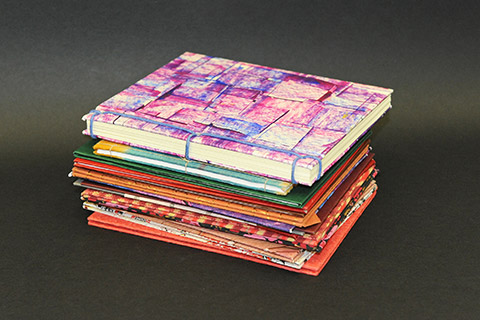 Photo: DNB, Dora Carstensen
Photo: DNB, Dora Carstensen
How are books held together and how are they protected? Bookbindings hold the layers of the book together and protect them. Books can be bound by hand or by machine. From folding the paper and stitching the pages to decorating the book cover, we introduce you to the tools and different stages of the bookbinder's craft.
Activity
We will show you a simple form of saddle stitching with which you can easily make a little book using folded paper, needle and thread. You can make your own accordion-folded books with a pencil and ruler by folding the paper, glueing it and cutting the pages.
Age
from class five
Family Sunday
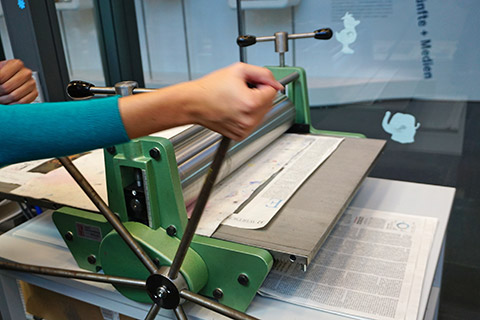 Photo: DNB, Julia Rinck
Photo: DNB, Julia Rinck
Every third Sunday of the month (except during the summer holidays and on some public holidays) there are creative programmes for families in the Museum Gallery of the German Museum of Books and Writing of the German National Library between 11:00 am and 12:30 pm. Some of the topics relate to the permanent exhibition “Signs - Books - Networks” and are complemented by activities around books, paper and printing. Special topics are also offered centring on a particular season or public holiday. For example, there is a nature printing activity in spring. Christmas cards can be designed during advent.
Art workshop
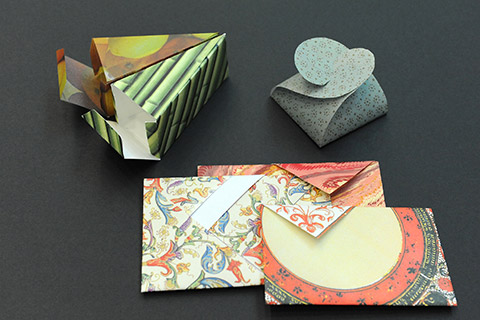 Photo: DNB
Photo: DNB
The art workshop at the German National Library’s German Museum of Books and Writing is specially intended for adults and young people aged 14 and over. This series takes place every third Wednesday of the month from 16:00 to 17:30. During the events held at the Museum, we will give you step-by-step instructions on bookbinding, printing techniques and creative designs using paper and ink.
Age
From age 14
Creative workshop
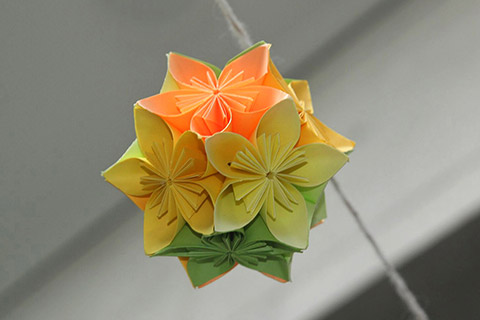 Photo: DNB, Julia Rinck
Photo: DNB, Julia Rinck
The Creative Workshop at the German Museum of Books and Writing of the German National Library is aimed particularly at families with children aged 7 and older. They can try their hand at a variety of creative techniques together. Creative workshops on topics relating to paper, printing and writing take place once a month on Thursdays from 15:00 to 16:30. The selection of topics is related to the season and current events.
Age
Children from age 7 and above, young people and adults
DIY
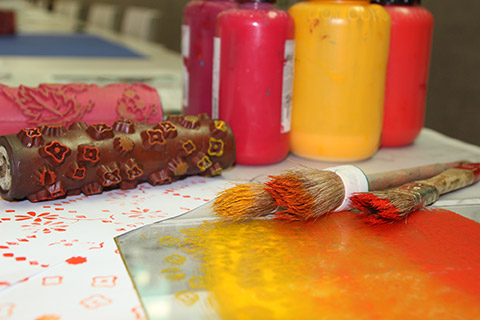 Photo: DNB
Photo: DNB
Our do-it-yourself workshops take place several times a year on Saturdays from 15:00 to 16:30.
The DIY trend which has grown in popularity over the last few years encapsulates the idea of creative self-realisation. Creative techniques are demonstrated in the Museum events which can then be applied at home using simple means. The topics of the workshops include e.g. making origami boxes, folded letters and quires, or printing and stencilling gift paper and stationery.
Age
Children aged 10 and over, young people and adults
Museum bingo
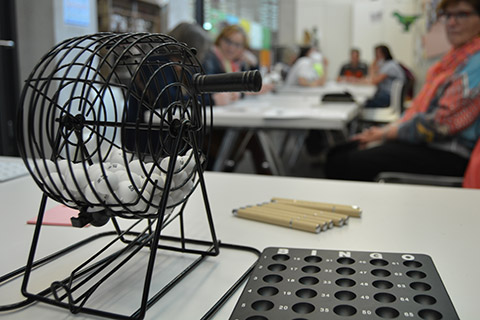 Photo: DNB, Paul Uhde
Photo: DNB, Paul Uhde
Combining games with a thirst for knowledge? Educational researchers have long known that knowledge acquired through play is stored in the long-term memory more quickly – and this doesn’t just to children and adolescents. That’s why the German Museum of Books and Writing will be inviting visitors to come and play museum bingo. Bingo is a classic game for the whole family. Five correct numbers in a row – bingo, you’ve won! But take care, we won’t make it that easy for you. First you have to score points in a quiz that will test your knowledge of the history of books and media, the museum and the library. The winner will receive an attractive prize, while everyone else will have a great time and share in the suspense. What’s more, you always know better after the event. Museum bingo can be played by anyone. Bring your whole family and spend some quality time together. We play (and share knowledge) once a month on Wednesdays from 17:00.
Readings
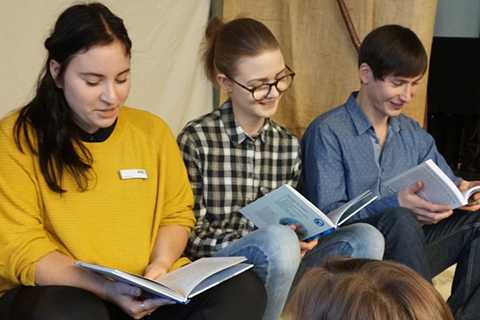 Photo: DNB, Fanni Fröhlich
Photo: DNB, Fanni Fröhlich
Reading aloud is not only important for children's language development, it also fosters empathy and imagination. The German Museum of Books and Writing offers readings for groups of children (here at the Museum or at your institution). These can be booked at any time of the year.
Once a year on the third Friday in November, we hold public readings for children to celebrate National Read Aloud Day, an initiative by Stiftung Lesen, the weekly newspaper DIE ZEIT and the Deutsche Bahn Stiftung. The Museum warmly invites everyone to attend at 9 am, 10 am, 11 am or 2 pm. We also offer children’s readings at these times in March parallel to the Leipzig Book Fair. Here we choose exciting books from the Museum’s extensive collection and read passages from them aloud.
Age
From pre-school
Workshops for school classes and daycare groups must be booked in advance. The dates of our reading events are listed in our events calendar
Museum Trunk
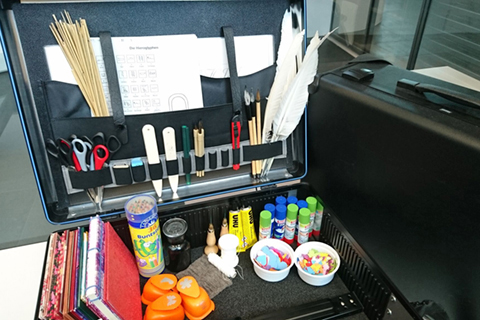 Photo: DNB, Dora Carstensen
Photo: DNB, Dora Carstensen
We also come to you! Besides visiting the Museum’s physical location, our “mobile museum” offers children the opportunity to experience the “Hands-On Museum” at their school or daycare centre. Our museum educator visits the children with a suitcase full of objects from the Museum. Activities focusing on writing, printing and paper are organised depending on the topic and can also be integrated into lessons.
Age
By individual agreement, from pre-school age.
Various theme-based events open to everybody.
Contact
dbsm-info@dnb.de
Tel. +49 341-2271-324
Holiday programme
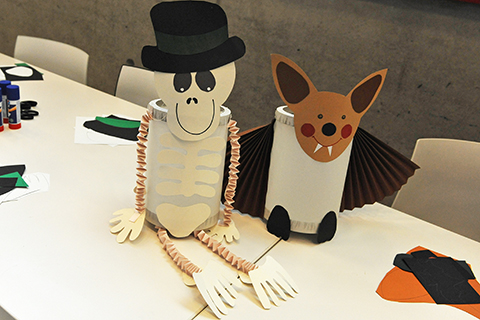 Photo: DNB, Dora Carstensen
Photo: DNB, Dora Carstensen
During the summer, autumn and winter holidays, we invite pupils of all ages to take part in creative activities in the Museum’s gallery, all of which focus on books, printing and paper. These events are part of the holiday pass programme offered by the City of Leipzig. Simple window stars, bound books, printed graphic designs, homemade coloured papers, lanterns featuring bats, skeletons or Frankenstein’s monster for Halloween – this is a great opportunity to make seasonal gifts and decorations.
Age
from pre-school
Workshops for school classes and daycare groups must be booked in advance.
The dates and times of events in our general holiday programme are listed in our events calendar
Seasonal programme
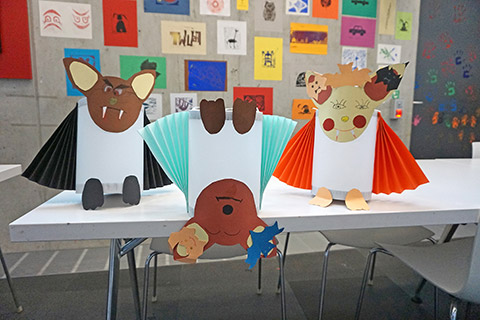 Photo: DNB, Paula Nerke
Photo: DNB, Paula Nerke
Along with our regular creative workshops, the German Museum of Books and Writing also offers other events for specific festivals and seasons: bat lanterns for Halloween, cards for Valentine’s Day, dragons and windmills in autumn, cones of sweets for the first day of school, Christmas stars for Advent season, funny origami rabbits for Easter.
We give you step-by-step instructions on how to create little works of art using techniques both old and new.
Age
depending on the topic
Workshops for school classes and daycare groups must be booked in advance. The dates of our reading events are listed in our events calendar
Thematic tours of the museum
 Photo: PUNCTUM, Bernhard Kober
Photo: PUNCTUM, Bernhard Kober
From cuneiform script to binary code: the permanent exhibition of the German Museum of Books and Writing tells the story of more than 5,000 years of media history. This offered plenty of material for several thematic tours, which can be booked individually and are intended for a wide audience. Visitors are guided through the permanent exhibition, the cultural history collection and the German National Library. From "Hidden Places" to music, industrial history, architecture, watermarks, languages, codes, book art and paper – the variety of topics is immense. Find out more in our flyer.
Download flyer "Thematic tours of the museum" (only available in German)
Opening hours and contact
Opening hours
German Museum of Books and Writing
Tuesday to Friday 10:00–18:00
Weekends and public holidays by arrangement.
Dates for the Hands-on Museum:
Book your date by arrangement or find a date in our calendar
Contact
dbsm-info@dnb.de
Phone +49 341 2271-324
Last changes:
29.06.2023


